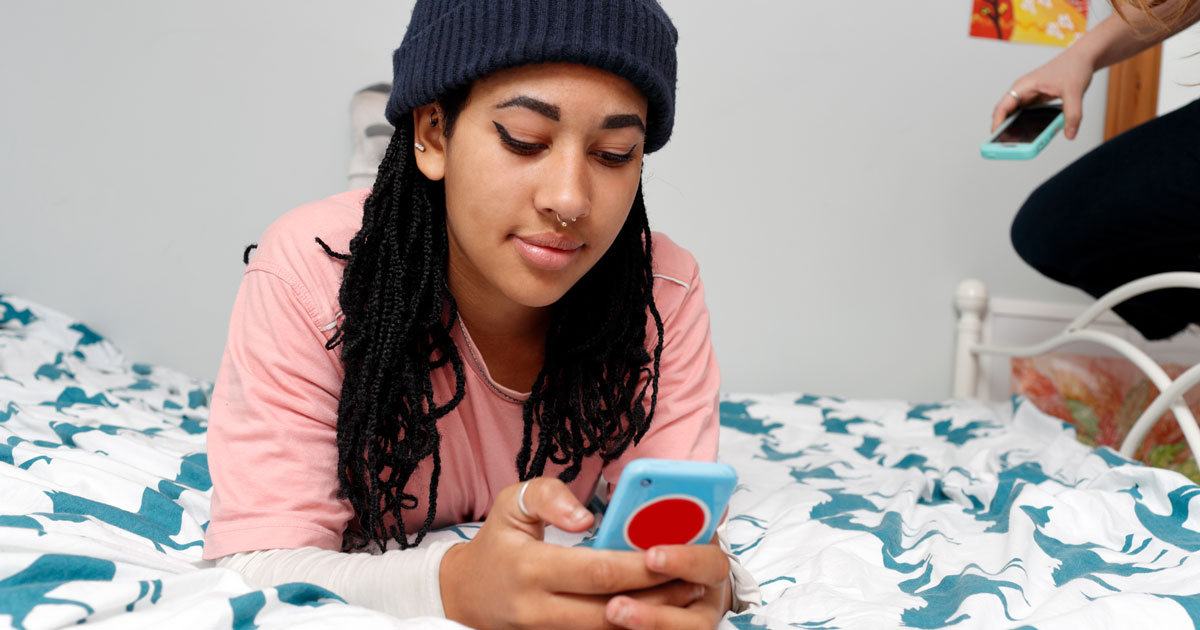

Gen Z to Brands: Meet Us Where We Live
Reaching Gen Z Means Understanding How They Consume News
When the average Gen Z consumer wakes up, the first thing she does is pick up her phone and check her social media feeds, scrolling through news, funny clips and pop-culture memes. As part of the generation born between 1997 and 2012, she is a digital native with little or no memory of life before smartphones; 98% of this cohort owns one. Smartphones are where Gen Z consumers get their news, entertainment and information about brands.
But many brands still don’t understand how to communicate with Gen Z, and that’s a problem because this group is extremely interested in knowing who they are and what they stand for. In WE Communication’s 2021 Brands in Motion report, 70% of Gen Z respondents say they’re more likely to purchase products or services from brands that are leaders on societal issues important to them.
Brands need to understand that the way Gen Z consumes media is significantly different from the way older generations do, and brands’ thinking about news and information as part of earned storytelling has to evolve. Here are the key insights every brand must know to engage Gen Z.
Keeping the fun—and the facts
Gen Z gets their news and information from a wide variety of sources, both credible and not-so-credible. They often engage with stories in the New York Times and CNN, but they aren’t accessing these sources from their app—only about 5% engage with news sites directly. Instead, they’re finding it in their social media feed.
The challenge for brands is that oftentimes those original news sources get overlaid with opinion from creators or everyday social media users. As I explain to my clients, we might be able to get them a placement in the Wall Street Journal, but if someone makes a funny TikTok on the issue that takes facts out and puts opinion in, there’s very little we can do about it.
That’s why brands need to be upfront about what is happening in the social digital ecosystem and think about strategies for controlled information and entertainment, aka infotainment. How do we tell stories in a way that is fact-based but has enough entertainment value for Gen Z? We already know they will put their own spin on it, so brands need to find ways to ensure that when the fun is inserted the facts aren’t extracted.
Pivoting to video
When the Gen Z consumer scrolls through her feed, she is significantly more likely to engage with a video with a concise caption rather than read a block of text. A 2020 YPulse survey found that 57% of Gen Z say they keep abreast of the news via video, verses 43% who say text. And the three most popular Gen Z channels are video-first platforms: Instagram, YouTube and TikTok. The migration to video-first from text-first platforms is most strongly seen in the difference between Gen Z and millennial social media platforms. According to YPulse, 29% of Gen Z say they get their news from Facebook versus 71% of millennials.
This doesn’t mean that Gen Z consumers don’t read; they’ve just grown up in an era where imagery speaks to them more effectively than text.
Brands wanting to reach Gen Z need to think about telling stories in as visual a way as possible, but these videos don’t need to be highly polished or produced. This is the generation who grew up being able to publish anything from a video to a blog in a matter of seconds, and they actually prefer the scrappier forms of storytelling seen on platforms like TikTok, which feels more authentic and less commercial to them.
The pandemic accelerated this trend toward user-generated content. It not only acclimated us to seeing CEOs and heads of state broadcasting from their kitchens, it also significantly ramped up the creator economy. In the early days of lockdown, when virtually all traditional film and video production ceased, brands relied on creators’ ability to self-produce and self-direct based off a few pages of a brief. Now that trend is here to stay.
Understanding TikTok and subcultures
Members of Gen Z are often treated like a monolith, but of course they are composed of many subcultures with different interests and perspectives. To reach them, brands need to identify the subcultures they most naturally align with—be it gaming, sustainability, social justice or DIY fashion—and then connect with them on the social sites where they convene.
On this front, TikTok is the clear leader. TikTok has the highest engagement rate across social media, and the average TikTok user spends 52 minutes a day on the app.
What distinguishes TikTok is the way it enables users to find their digital community and connect with people in their subculture. TikTok’s For You Page (FYP) is a feed tailored to the user based off what they engage with on the platform. For example, a user who watches a lot of cleaning videos would be on #CleanTok and one who engages a lot of corporate videos is on #CorporateTok. Once they’ve found their group, TikTok users are just as interested in interacting with each other as they are with consuming content. TikTok is the only social platform where the comments can sometimes receive nearly as much engagement as the original piece of content. You often see comments like, “I tripped over myself running to the comment section,” because people are eager to see if other people share their opinion about that piece. The power of the TikTok community is what keeps Gen Z coming back.
Listening to Gen Z
With so much user-generated content and engagement, social media is providing brands with an unprecedented window into what Gen Z wants. On social media, consumers tell you exactly what they want, even if they think you’re not listening. Brands are now able to mine and synthesize this data, leveraging it to create consumer insights and communication strategies.
As I tell my clients, social listening can provide important insights, even if the particular brand isn’t mentioned. For example, if people are saying they hate sitting in meetings all day because it means they have to do all their work at night, that’s something a company like Microsoft wants to know. If people say they have only 10 minutes to prepare lunch while working from home, then a food and beverage company might want to start thinking about how to create a product innovation for that busy individual. Social listening can enable brands to identify those key pain points and develop strategies to address them through storytelling or product.
The latest blogs from WE
MNCs in China Must Prioritize Internal Communications
To Tell Your ESG Story, Think Digital
5 Ways Tech Will Reshape Culture in 2024


